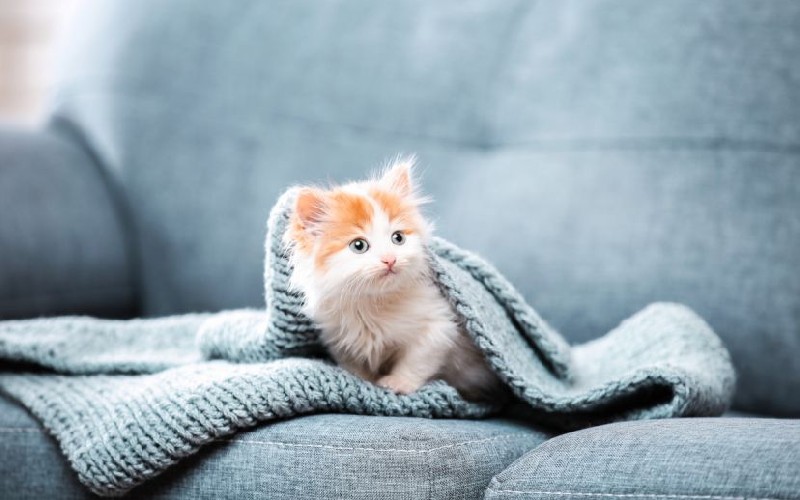
A home suitable for a kitten
Committing to sharing your life with a cat is an important decision because the full responsibility for satisfying the kitten’s unique needs is provided by their Pet Parent(s). The cat's basic needs are to eat, drink, rest, urinate, defecate, and mate. These are known as primary needs, which are fundamental for all animals. It is important, however, to also be aware of the typical behavioral needs of a kitten before they join a new home. The most common behavioral needs are searching, exploring, climbing, and observing the world from above as well as nail trimming. To best cater to these needs, it is necessary for all Pet Parents to adapt their home to the kitten’s needs, just like when a human baby is brought home. Most importantly, the kitten must feel protected and safe.What is the ideal age to adopt a kitten?
A kitten should be adopted at around 2-3 months old. This helps promote correct behavioral development as it is essential that the kitten spends time with their mother and siblings. The selection made by human beings regarding domestication was made by focusing solely on aesthetic criteria (for example the size and color of the coat) rather than on behavior. Before choosing which kitten to adopt, it is advisable to ask your veterinarian for advice in order to fully evaluate the kitten on various parameters (place of origin, breed, sex, subject) that could better adapt to the living environment and your family situation. For example, I recommend observing the behavior of the kitten so that Pet Parents can closely evaluate its sociability by seeing how the kitten approaches the person, accepts contact, rubs their cheek on your hand to caress them and if they are purring. These are all signals that indicate a strong propensity to interact with the human being.
Welcoming the Kitten
To best welcome the kitten, your home must be adapted to its unique needs so that it "feels at home". Up to the age of 4-5 months, food and water, their litter box, a cat house, a scratcher and any toys must be placed in the same room so that the kitten has everything within easy reach. I recommend creating at least two "ad hoc” areas, one in the living area and one in the sleeping area of the house.
Here's what you should buy for kitten's home
- Synthetic pheromones: to ease the introduction of the kitten into their new home, it is advisable to use synthetic pheromones by using a device that emits them a few hours before the kitten’s arrival. By doing so, the kitten will be able to overcome the stress associated with separation from their family of origin and any environmental changes.
- Food: The entire daily dose of dry food must be left available. During family meal times, give the kitten a few tablespoons of wet food.
- Water: water must always be fresh and abundant.
- The litter box: the kitten’s litter box must have low edges and contain a 1-2 inch layer of litter.
- Places to rest: from the very start of living in their new home, the kitten must sleep close to their Pet Parent to feel welcomed and protected. One or more cat beds must be arranged in the "ad hoc areas".
- The scratcher: to keep the furniture scratch-free, it is advisable to place a vertical stretcher (a turret covered with sisal) near the kitten's favorite resting place. Since the kitten is still inexperienced in jumping and climbing, the scratcher should not be more than three feet high.
- Toys: paper balls, corks, walnuts, hazelnuts, raw pasta and so on can “come alive” in the hands of the little feline. These items must always be collected and put together in a box (the size of a shoebox without a lid) so that the kitten can use the toys whenever.

